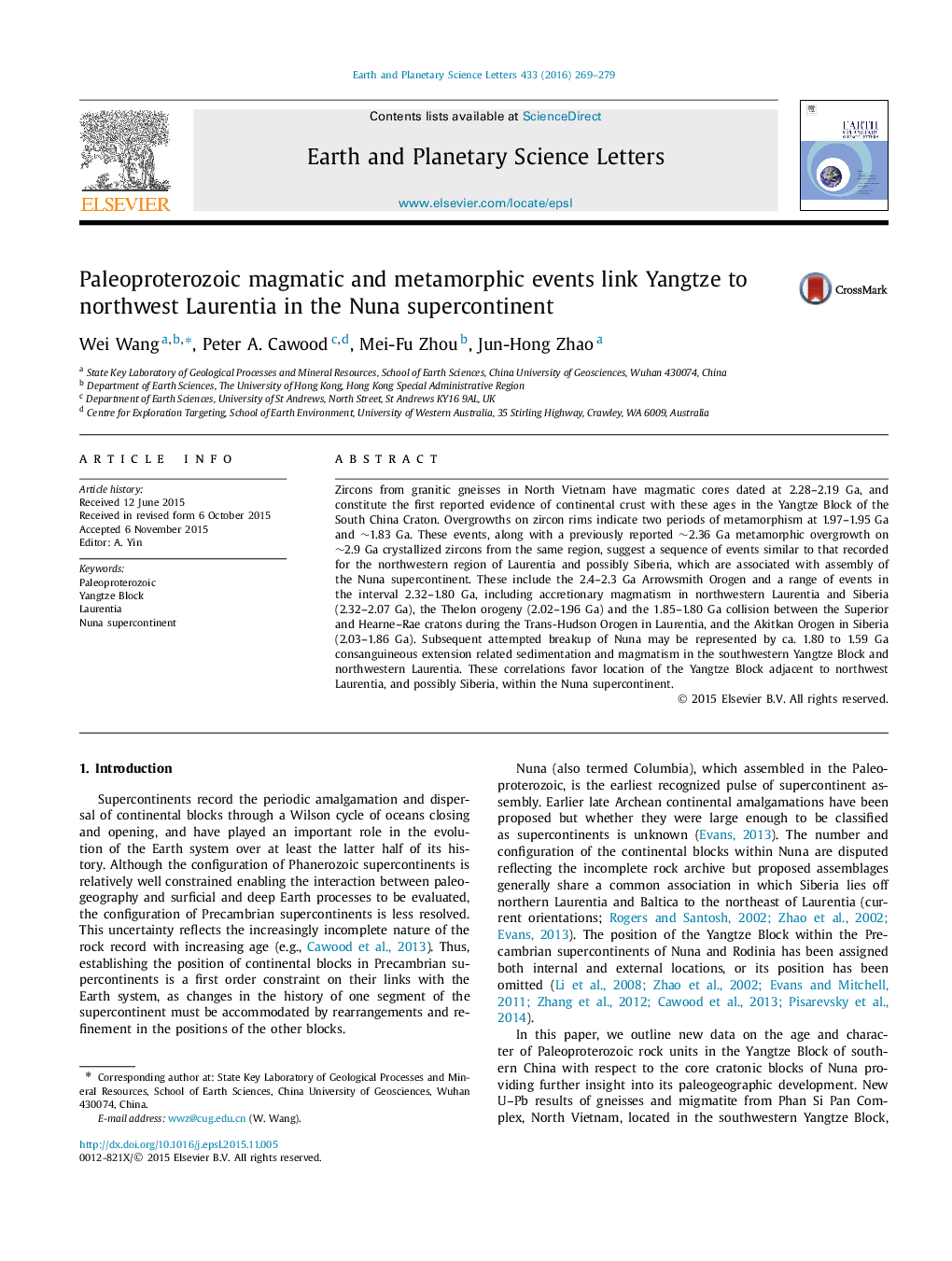| Article ID | Journal | Published Year | Pages | File Type |
|---|---|---|---|---|
| 6427705 | Earth and Planetary Science Letters | 2016 | 11 Pages |
â¢The first reported 2.28-2.19 magmatic event in southwestern Yangtze Block.â¢Two periods of metamorphism, 1.97-1.95 Ga and â¼1.83 Ga, occurred on the 2.28-2.19 rocks.â¢The Yangtze Block was an exotic terrene accreted to Laurentia at â¼2.4-2.3 Ga.â¢The Yangtze Block was linked to northwestern Laurentia, and possibly Siberia, in the Nuna supercontinent.
Zircons from granitic gneisses in North Vietnam have magmatic cores dated at 2.28-2.19 Ga, and constitute the first reported evidence of continental crust with these ages in the Yangtze Block of the South China Craton. Overgrowths on zircon rims indicate two periods of metamorphism at 1.97-1.95 Ga and â¼1.83 Ga. These events, along with a previously reported â¼2.36 Ga metamorphic overgrowth on â¼2.9 Ga crystallized zircons from the same region, suggest a sequence of events similar to that recorded for the northwestern region of Laurentia and possibly Siberia, which are associated with assembly of the Nuna supercontinent. These include the 2.4-2.3 Ga Arrowsmith Orogen and a range of events in the interval 2.32-1.80 Ga, including accretionary magmatism in northwestern Laurentia and Siberia (2.32-2.07 Ga), the Thelon orogeny (2.02-1.96 Ga) and the 1.85-1.80 Ga collision between the Superior and Hearne-Rae cratons during the Trans-Hudson Orogen in Laurentia, and the Akitkan Orogen in Siberia (2.03-1.86 Ga). Subsequent attempted breakup of Nuna may be represented by ca. 1.80 to 1.59 Ga consanguineous extension related sedimentation and magmatism in the southwestern Yangtze Block and northwestern Laurentia. These correlations favor location of the Yangtze Block adjacent to northwest Laurentia, and possibly Siberia, within the Nuna supercontinent.
